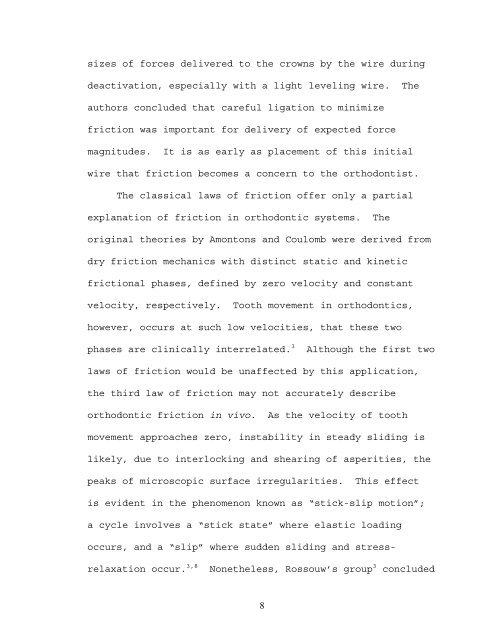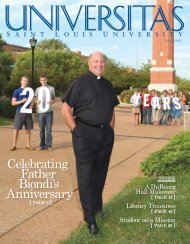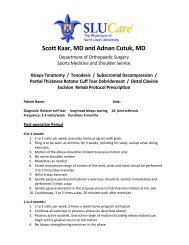The effects of third-order torque and self - Saint Louis University
The effects of third-order torque and self - Saint Louis University
The effects of third-order torque and self - Saint Louis University
Create successful ePaper yourself
Turn your PDF publications into a flip-book with our unique Google optimized e-Paper software.
sizes <strong>of</strong> forces delivered to the crowns by the wire during<br />
deactivation, especially with a light leveling wire. <strong>The</strong><br />
authors concluded that careful ligation to minimize<br />
friction was important for delivery <strong>of</strong> expected force<br />
magnitudes. It is as early as placement <strong>of</strong> this initial<br />
wire that friction becomes a concern to the orthodontist.<br />
<strong>The</strong> classical laws <strong>of</strong> friction <strong>of</strong>fer only a partial<br />
explanation <strong>of</strong> friction in orthodontic systems. <strong>The</strong><br />
original theories by Amontons <strong>and</strong> Coulomb were derived from<br />
dry friction mechanics with distinct static <strong>and</strong> kinetic<br />
frictional phases, defined by zero velocity <strong>and</strong> constant<br />
velocity, respectively. Tooth movement in orthodontics,<br />
however, occurs at such low velocities, that these two<br />
phases are clinically interrelated. 3 Although the first two<br />
laws <strong>of</strong> friction would be unaffected by this application,<br />
the <strong>third</strong> law <strong>of</strong> friction may not accurately describe<br />
orthodontic friction in vivo. As the velocity <strong>of</strong> tooth<br />
movement approaches zero, instability in steady sliding is<br />
likely, due to interlocking <strong>and</strong> shearing <strong>of</strong> asperities, the<br />
peaks <strong>of</strong> microscopic surface irregularities. This effect<br />
is evident in the phenomenon known as “stick-slip motion”;<br />
a cycle involves a “stick state” where elastic loading<br />
occurs, <strong>and</strong> a “slip” where sudden sliding <strong>and</strong> stress-<br />
relaxation occur. 3,8 Nonetheless, Rossouw’s group 3 concluded<br />
8
















